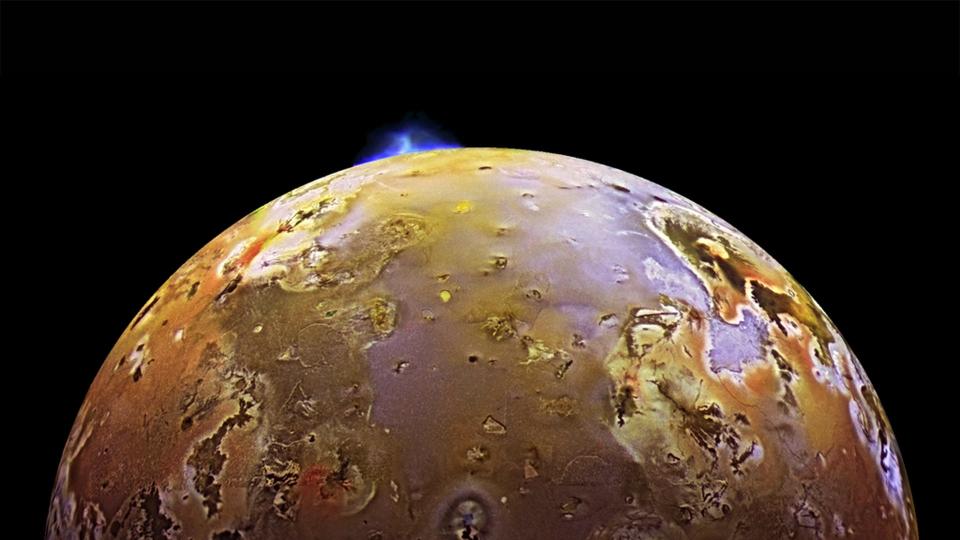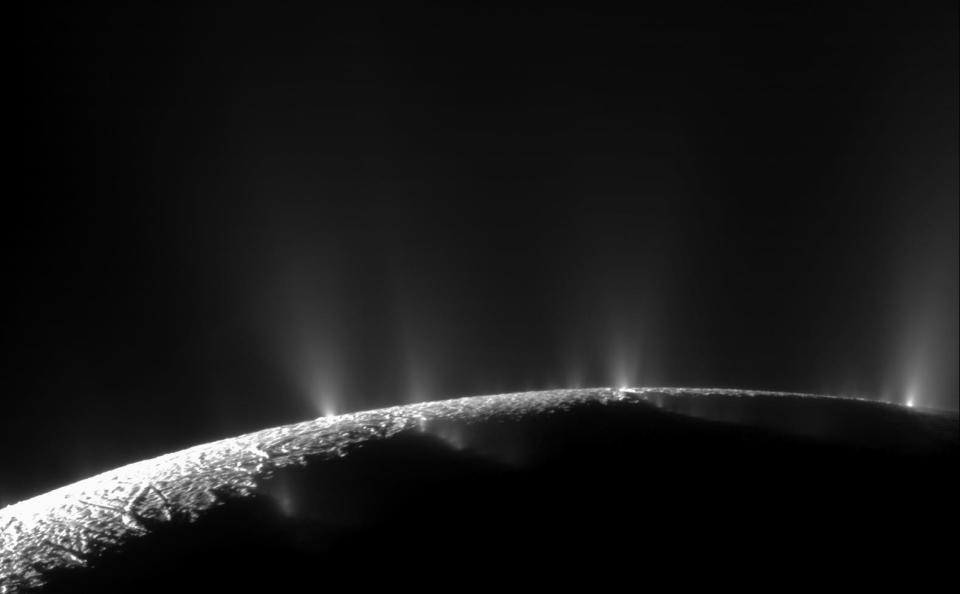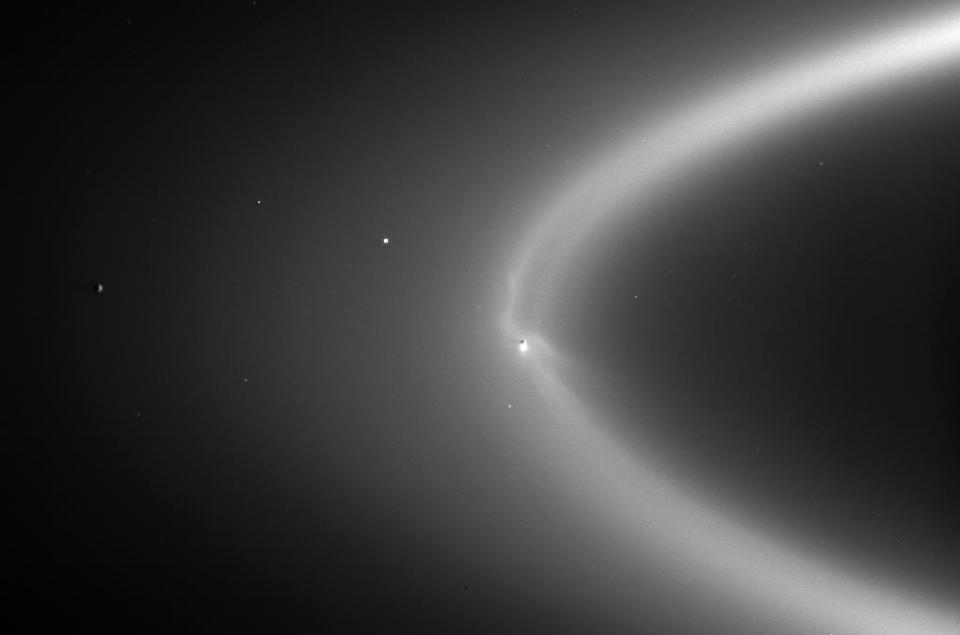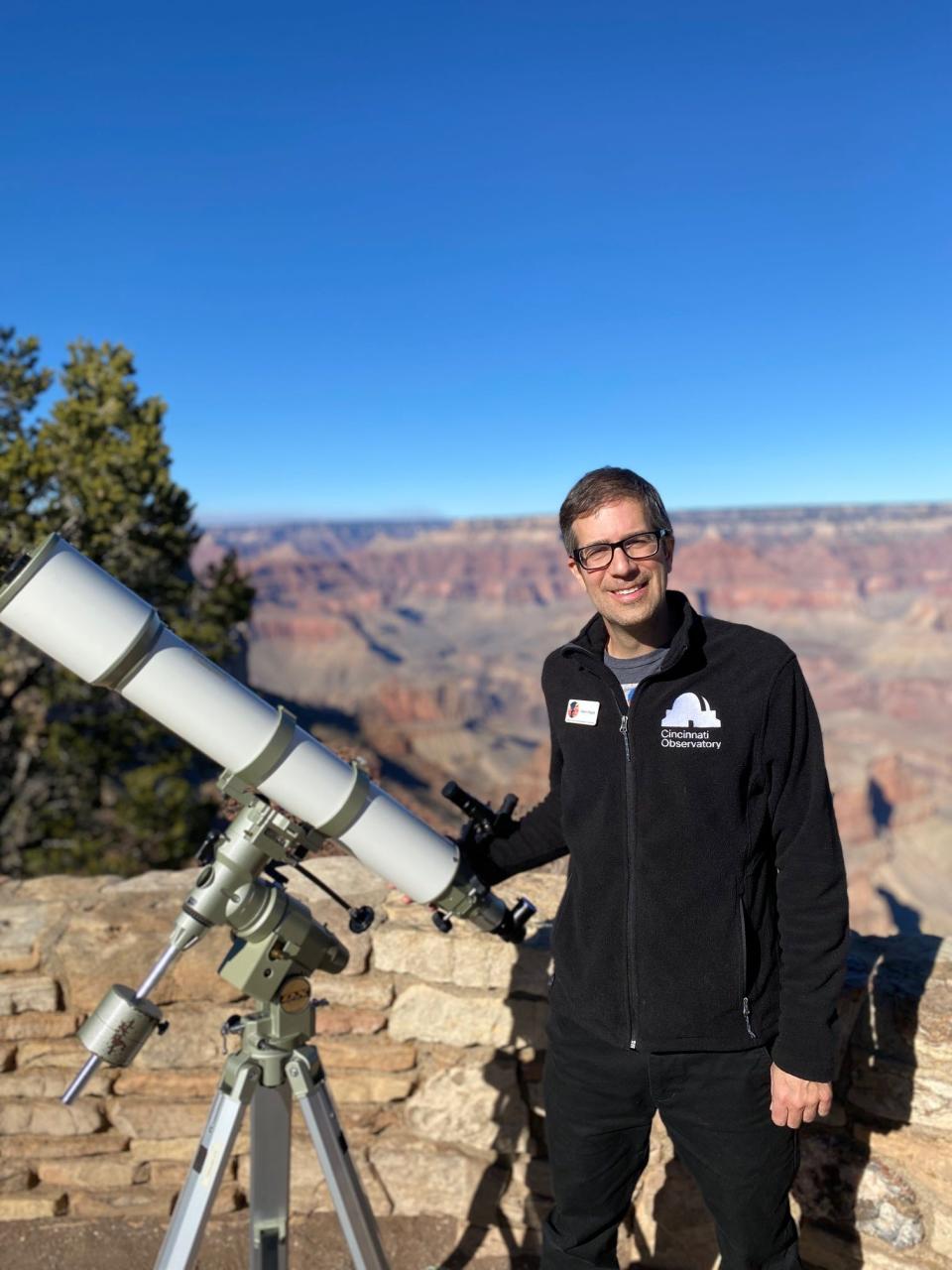Volcanoes on Earth don't hold a candle to these solar system monsters 🌋
Five worlds in the solar system have active volcanoes (those that are currently erupting or have erupted in human history): Earth, Jupiter’s moons Io and Europa, Neptune’s moon Triton, and Saturn’s moon Enceladus. But there are a few other worlds that show signs of ancient (and not-so-ancient) activity. Let’s explore these explosive spots in the solar system.
Watch: Moon has 'close encounter' with space station over Cincinnati 🛰️

Where the lava flows
A volcano is a hole in a planet or moon where hotter material from the inside erupts out onto the surface or into the air. On Earth, there are hundreds to thousands of active and potentially active volcanoes. On the Big Island of Hawaii is Mauna Loa, the largest active volcano on Earth. It is 5.5 miles (9 km) high, but more than half of it is underwater. Yellowstone National Park in the United States sits over an extremely volcanic area. Three eruptions in the distant past created a crater 30-by-45 miles across (48-by-72 km). Under the Pacific Ocean lies Tamu Massif, a volcano so large it would cover the entire state of New Mexico.
Earth may have a lot of volcanoes, but no place in the solar system is like Jupiter’s moon Io. Io is by far the most volcanic place in the solar system. Every day, hundreds of volcanoes on Io are actively erupting with one shooting lava more than 100 miles above the surface. Io has a sea of lava named Loki Patera, which is about one million times larger than the average lava lakes on Earth. And over the course of five months, a mountain the size of Arizona grew on Io’s surface. This little moon is literally turning itself inside out.
Cryovolcanoes

There is another, colder type of volcano that shoots out liquids and ices made of water, methane, ammonia and chlorine instead of lava. Called cryovolcanoes, these eruptions form mountains of ice.
Jupiter’s moon Europa is covered in ice. However, geysers gush material, including water, through cracks in the surface. Scientists believe that the internal heat source causing these gushers may have melted the ice deep inside the planet. If true, Europa may have more water than the entire Earth.
Even though Triton, Neptune’s largest moon, is billions of miles from the sun, it has an internal heat source that makes it volcanically active. Volcanoes on Triton spew gases over this otherwise frozen world.
Saturn’s largest moon, Titan, is large enough to hold a thick atmosphere of nitrogen and methane (not much oxygen, unfortunately, so you couldn’t breathe it). Cryovolcanoes on Titan, Saturn’s largest moon, seem to spurt gases above the ice surface adding to the ever-present hazy climate of Titan.
But the undeniably cool cryovolcano champ in the solar system has to be Enceladus, Saturn’s minuscule moon. Enceladus is a frozen ball about 313 miles in diameter but it is not frozen solid. NASA’s Cassini spacecraft flew past Enceladus several times and noticed geysers of water erupting through cracks in the moon’s south pole and blasting into space. As the moon circles Saturn, those frozen droplets form a ring around the planet.

Extinct volcanoes
Many worlds in our solar system show signs of ancient volcanoes and lava flows solidified in fascinating rock formations. Sapas Mons, an extinct volcano on Venus, has two peaks. It is 2.5 miles (4 km) tall and surrounded by old lava flows and landslides.
The Tharsis region on Mars has 12 massive volcanoes. The biggest are Olympus Mons, Ascraeus Mons, Pavonis Mons and Arsia Mons. They are up to 100 times larger than any volcanoes on Earth.
Ahuna Mons is a cryovolcano on the dwarf planet Ceres. It grew from eruptions of mud and salty water that froze on the surface. During the New Horizons mission that flew past Pluto in 2015, astronomers saw signs of cryovolcanoes. Ridges and mountains of ice and ammonia were stacked up in such an usual way that they appeared like frozen daggers rising above the otherwise flat plain.
Dean Regas is the Astronomer for the Cincinnati Observatory and author of the books 1000 Facts About Space, and How to Teach Grown-Ups About Pluto. For a daily Space Fact, follow him on Instagram: @deanregas.

Tour of the Universe Online Class
What: Astronomer Dean Regas takes you on a virtual tour of everything. Take this fast, fun, online class for all ages and interests, right from your home.
When: Tuesday, April 11, 7 p.m.
Where: Zoom webinar.
Tickets: $10/household.
Information: cincinnatiobservatory.org.
First Light Night at the Cincinnati Observatory
What: Celebrate the oldest telescope in the U.S. as it turns 178. Learn astronomy, tour the buildings and then look through the 178-year-old telescope at the stars (weather permitting).
When: Friday, April 14, 8-10 p.m.
Where: Cincinnati Observatory, 3489 Observatory Place.
Tickets: $15/adult, $10/child.
Information: cincinnatiobservatory.org.
This article originally appeared on Cincinnati Enquirer: Meet the volcanoes of our solar system, from Earth to Saturn's moon

